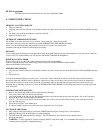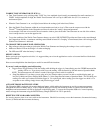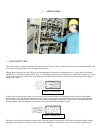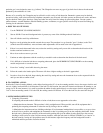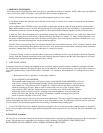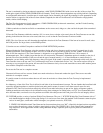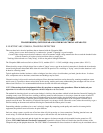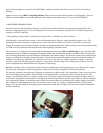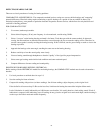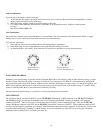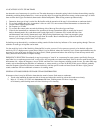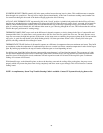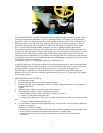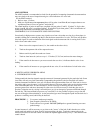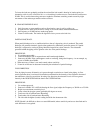22
DETECTING BEARING FAILURE
There are two basic procedures of testing for bearing problems:
COMPARATIVE AND HISTORICAL. The comparative method involves testing two or more similar bearings and "comparing"
potential differences. Historical testing requires monitoring a specific bearing over a period of time to establish its history. By
analyzing bearing history, wear patterns at particular ultrasonic frequencies become obvious, which allows for early detection and
correction of bearing problems.
FOR COMPARATIVE TEST
1. Use contact (stethoscope) module.
2. Select desired frequency. (If only one frequency is to be monitored, consider using 30 kHz.
3. Select a "test spot" on the bearing housing and mark it for future. Touch that spot with the contact module. In ultrasonic
sensing, the more mediums or materials ultrasound has to travel through, the less accurate the reading will be. Therefore, be
sure the contact probe is actually touching the bearing housing. If this is difficult, touch a grease fitting or touch as close to the
bearing as possible.
4. Approach the bearings at the same angle, touching the same area on the bearing housing.
5. Reduce sensitivity to hear the sound quality more clearly.
6. Listen to bearing sound through headphones to hear the "quality" of the signal for proper interpretation.
7. Select same type bearings under similar load conditions and same rotational speed.
8. Compare differences of meter reading and sound quality.
PROCEDURE FOR BEARING HISTORY (HISTORICAL):
Before starting with the HISTORICAL method for monitoring bearings, the COMPARATIVE method must be used to determine a
baseline.
1. Use basic procedure as outlined above in steps 1-8.
2. Save the reading for future reference.
3. Compare this reading with previous (or future readings). On all future readings, adjust frequency to the original level.
If the decibel level has moved up 12 dB over the base line, it indicates the bearing has entered the incipient failure mode.
Lack of lubrication is usually indicated by an 8 dB increase over baseline. It is usually heard as a loud rushing sound. If lack of
lubrication is suspected, after lubricating, retest. If readings do not go back to original levels and remain high, consider bearing is
on the way to the failure mode and recheck frequently.



